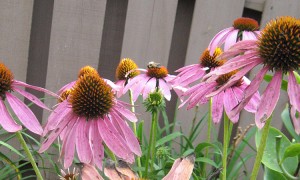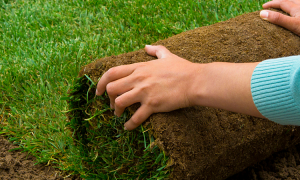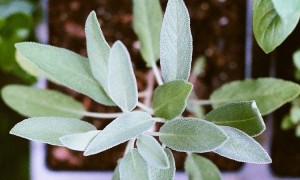Even if all the outdoor space your Philadelphia home has is a tiny stoop or petite patio, you can exercise your green thumb with container gardens. Whether your goal is to add some beauty to your surroundings with plants or to try to grow your own food, here are a few ideas for containers to get you started.
Container Garden Basics
Before you start planting container gardens, it helps to understand their needs and what makes them different from growing in the ground. One of the biggest differences is the type of planting material you use. Containers need their own special container mix. Regular dirt from the ground is likely to compact and trap in water, strangling your plants.
Although it’s often called potting soil, the mix doesn’t contain any real soil. It’s a combination of ingredients such as sphagnum peat moss, perlite, vermiculite, and compost. The exact ingredients vary from brand to brand, allowing you to find a mix that works best for the type of plants you want to grow. You can also find organic potting mix, if growing organically matters to you. You can find name-brand mixes at big box stores across Philly or stock up on Organic Mechanics, an organic mix that is produced in Pennsylvania, found at Whole Foods, Urban Jungle, and Greensgrow Farms.
One Large Container
If you’ve got a front stoop, one way to dress it up is by planting a container or containers by its side. Larger pots often work best when you’re decorating the front of your home, as they are less likely to be picked up and carried off.
When picking plants for your container garden, think tall, wide, and trailing — a method known as “thrillers, spillers, and fillers.” You want a taller plant, such as a type of grass; a long-stemmed flower (such as a daisy or miniature sunflower); or elephant ears, to be the eye-catching focal point of the container. Ideally, the thriller should be about twice the height of the container itself. Spillers are trailing plants, such as sweet potato vine, lantana, and petunias, that drape over the sides of the pot while fillers are smaller plants, such as geraniums and marigolds, that grow between the taller thrillers in the center and the trailing thrillers on the edge of the pot.
A Group of Containers
Instead of a single large container, you can choose four pots of various sizes. A grouping can be a great way to dress up a small yard or patio. Place the largest pot at the back, the two medium-sized pots in front of it, slightly to the sides, and the smallest pot in front, to form a diamond shape. Use the thrillers, spillers, and fillers method planting for each pot, with the exception of the smallest pot, which will most likely only have room for a single plant. You can pick a theme for your arrangement, too. For example, if you’re trying your hand at vegetable gardening, you can plant a tomato in the biggest pot, surrounded by a few basil plants. Put peppers and other herbs in the two mid-sized pots, and lettuce in the smallest one.
Once you’ve got your containers planted, it’s essential that you care for them. Containers dry out quickly, so you might need to water once a day, or even twice daily in the heat of summer. Dig a bit of fertilizer into the container mix every six weeks or so, to keep your plants fed. With some attention, your containers will reward you with bright flowers or tasty veggies all season.
[cf]skyword_tracking_tag[/cf]






